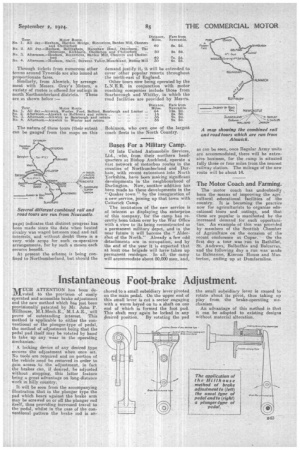Instantaneous Foot-brake Adjustment.
Page 25

If you've noticed an error in this article please click here to report it so we can fix it.
MUCH ATTENTION has been devoted to the provision of easily operated and accessible brake adjustment and the new method which has just been provisionally patented by Mr. John P. Hillhouse, M.1.Mech.E., M.I.A.E., will prove of outstanding interest. This method is applicable to either the conventional or the plunger-type of pedal, the method of adjustment being that the pedal pad itself may be rotated by hand to take up any wear in the operating mechanism.
A locking device of any desired type secures the adjustment when once set. No tools are required and no portion of the vehicle need be removed in order to gain access to the adjustment, in fact the brakes can, if desired, be adjusted without stopping, this latter feature being a great advantage on Iong-distance work in billy country.
It will be seen from the accompanying illustration that in the plunger type the pad which bears against the brake arm may be screwed on or off the plunger rod itself, thus providing increased travel to the pedal, whilst in the case of the conventional pattern the brake rod ie. an chored to a small subsidiary lever pivoted on the main pedal. On the upper end of this small lever is cut a sector engaging with a worm keyed on to a ahaf S on one end of which is formed the foot pad. This shaft may again be locked in any
desired position. By rotating the pad the small subsidiaey lever is caused to rotate about its pivot, thus taking up play from the brake-operating mechanism.
An advantage of this method is that it can be adapted to existing designs without material alteration.






























